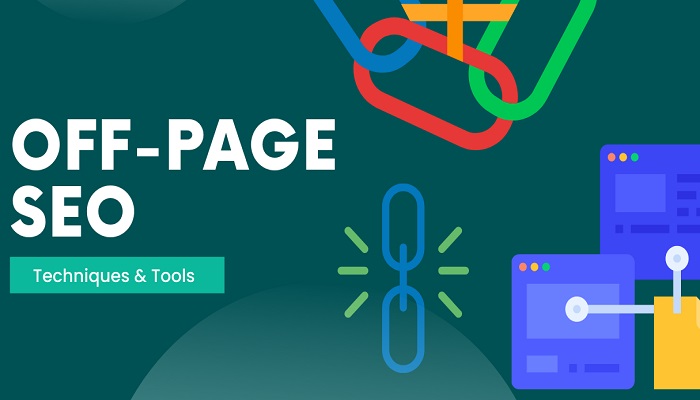In this article, we explained how to make each of your blog posts SEO friendly, so they can rank very high on the search engine reporting page.
SEO means Search Engine Optimization.
For new bloggers, the idea of SEO may sound complicated, because little you’ve read about SEO makes it look very complex, especially when you keep hearing terms like; back-link, white hat, black hat, broken link, keyword research, linkbait, on-page SEO, off-page SEO, etc.
These terms sound huge and scary because the so-called expert wants you to believe that SEO is a very complicated thing; therefore, you should hire them to do it for you.
Today, I will discuss the basics of SEO, which is on-page SEO. A lot of bloggers would focus on off-page SEO. Whereas they should focus on on-page SEO before investing their time and energy in getting links back to their blog.
What is on-page SEO?
On-page SEO is simply the art of making your blog easily accessible for search engines to crawl and index all the time.
It’s all about linking each content of your blog to one another, in a way that each content relates to the other and such that users can easily navigate through your blog without any difficulties — using the right keyword both in contents and post title.
To know how important SEO is, check big websites like Wikipedia, Hubpages, etc. You would notice that they would always link related articles to one another.
To make it easy for both readers and search engines to navigate their website content.
What is Off-page SEO?

Off-page SEO is similar to on-page SEO. However, the difference between the two is such that, off-page SEO focuses on getting a link back to your blog from other popular blogs with high ranks.
There are various ways of getting a link back to your blog from other blogs, but this post will not focus on that.
I think on-page SEO should first be settled and put in order before a blogger begins to worry about off-page SEO.
So here is a checklist of what you should do to your blog post to make it SEO-friendly.
On-Page SEO Checklist
Keyword Research
It’s vital that you conduct proper keyword research before publishing a post on your blog. Users search for various topics on Google and other search engines using different keywords and terms.
The purpose of conducting keyword research is to know the keywords people are using in searching for the topic you are about to publish on your blog.
When you use the appropriate keywords, it increases your visibility and rank on the search engine result page, which means more organic traffic to your blog and more money.
Conducting simple keyword research is very easy; you don’t have to buy any software or hire an expert to do simple keyword research for each blog post.
- Google Keyword Planner: I rely solely on Google Keyword Planner to check the volume of keyword searches and the competition and cost per click for each keyword. Log on to Google Keyword Planner with your Google account and click on find a new keyword. Type in the keyword that best describes your post, and it will show you a list of keywords and the search volume. Make a list of the top five (5) keywords; check out for long-phrase with decent search volume (They are the best). Then head over to the Google search page.
- Google Search: On the Google search page, enter each of the keywords you’ve sorted listed from the keyword planner. Don’t hit the search button, allow the box to show suggested search terms, then take note of those terms and copy them in a notepad. Once you’ve copied the suggested search terms, and then hit the search button and scroll to the end of the search page where it will show another list of suggested terms. Take note of those terms as well. With the two methods, you should be able to come up with a good keyword for your post title and headings. Make sure your keyword has a decent search volume. Include the keywords in your Post title, Headings, and subheadings as well as the post body.
Post Title
Just like I have mentioned above, make sure you include your chosen keyword in your post title, you should also make the post title look as catchy as possible.
Remember; you’re writing for both robot (search engine) and human audience at the same time.
The purpose of making it look catchy is to get human readers to click on your post when they see it on the result page, while the purpose of using keywords in the post title is to trigger your page on the search engine result page.
Try as much as possible to limit the length of your blog post title to 50-60 characters. Lengthy blog post titles don’t do well on the search engine result page.
SEO FRIENDLY URLs
When writing a blog post, always remember that you’re writing for both humans and robots (search engines).
Most humans don’t care about what you put in your URL, but the robot cares about the keywords in your URL.
As a matter of fact, the search engine bot uses the keyword in your URL to determine if your post is appropriate for the search term the user inputs in the search box.
So make sure you edit your blog post URL to include your keyword.
Don’t make it too lengthy. Remove all stop words; such as “but, with, and, if,” etc. These words would affect the structure of your URL and make it less friendly to search engines.
Heading and Sub-Heading Tags
Earlier, I wrote that it is important to conduct keyword research before publishing a post on your blog.
While I was talking about keyword research, I told you to make a list of the top 5 keywords and put them in a notepad.
While it is crucial to choose one of those keywords for your blog post, you should also note that you can use other closely related keywords within your post to enhance your blog post’s visibility on the search engines.
Use closely related keywords as header and subheader for your blog post. You can bold related keywords to make it more visible on the search engine result page.
Use Pictures and Videos
Make use of images and videos in your blog post as much as you can. If you don’t have a personal right to the image, make sure you give credit to the image owner to avoid copyright infringement.
If you can’t get yourself a free image without violating copyright law, you should publish the post without adding any image.
Internal ad Links
The basis of on-page SEO is to link each of your blog posts together. Link in such a way the search engine can easily move from one post to another without difficulties.
This is why you should make sure that each newly published post is linked to your previously published posts that are related to the new post.
It’s also essential to link to external articles or blog posts that are related to your blog post, as well.
It does not only increase your chances of being ranked on the search page, but it also allows you to get a link back from the article you linked to.
All you have to do is contact the owner of the article and tell them about your newly published post, ask them if they would be willing to share your new post across their social platforms, and if they would love to reference your post in their post as well.
All these things go a long way in increasing your visibility on the search engine result page.
Recap of the on-page SEO checklist
- Keyword research: Conduct proper Keyword research.
- Post Title: Use keywords in your post title.
- SEO Friendly URL: Use a keyword in your post URL
- Headings and Subheadings: Use related keywords in post headings and subheadings
- Pictures and Videos: Use photos and videos. Give credit to image owners.
- Internal and External Links: Link to some previously published posts, as well as external posts that relate to your newly published post.
As a blogger, do you think more attention should be given to on-page SEO than off-page SEO?
Let me know what you think in the comment box.
RELATED ARTICLES



Thanks for sharing this tips was helpful